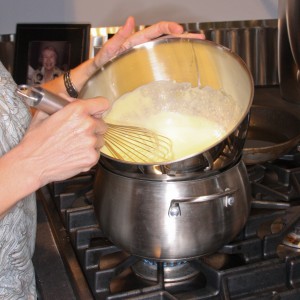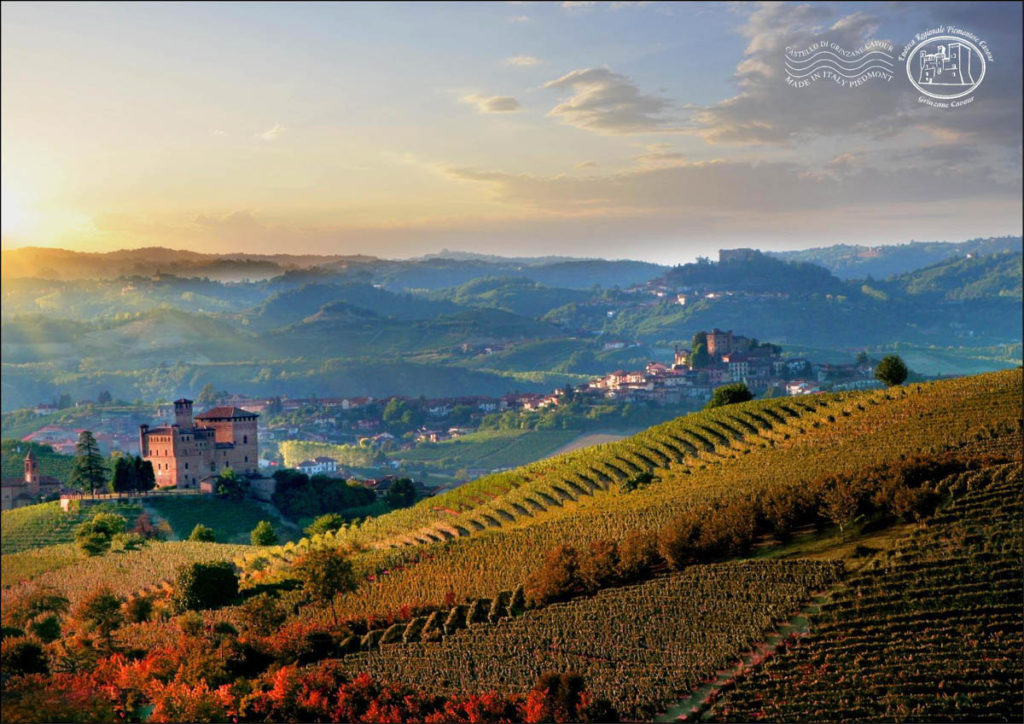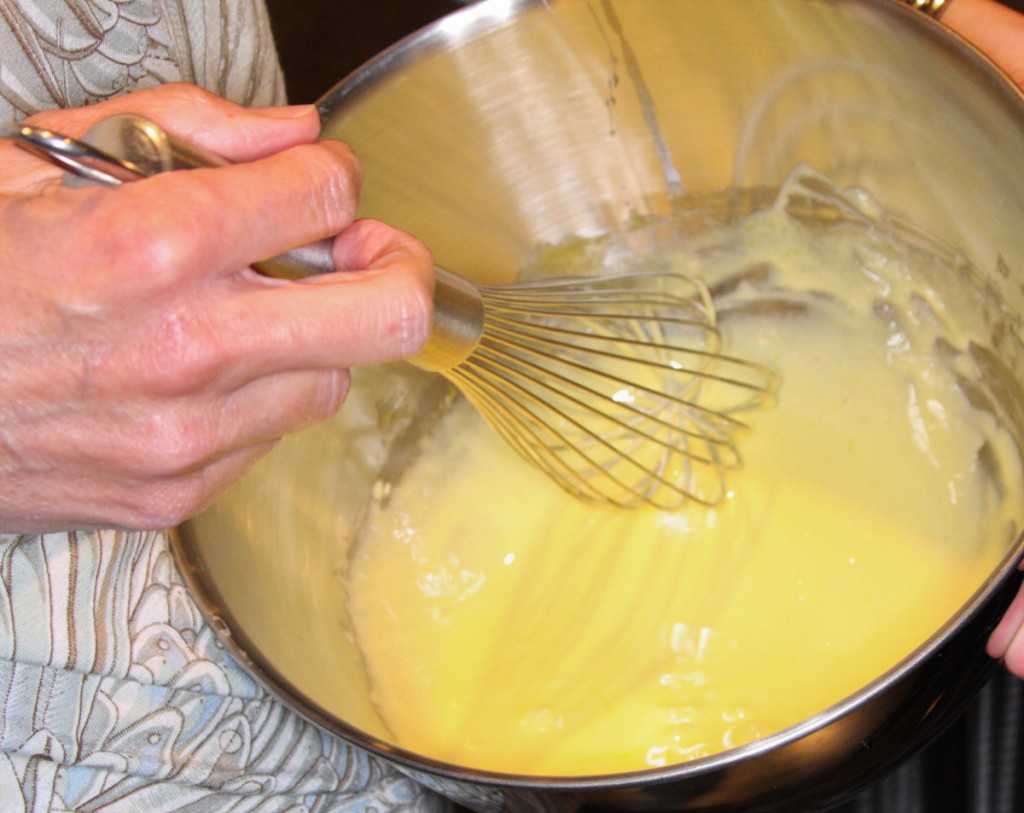A classic of Italian cuisine, this luscious and incredibly airy dessert is light and rich at the same time.
It could be defined as a velvety custard cream, but it has such a unique texture that it’s hard to classify.
Its origins are uncertain. One legend says it was invented in Turin around the 16th century, another source claims that it originated in the kitchens of Caterina de’ Medici but the dessert first written recipe – found in “L’Arte di Ben Cucinare”, a 1662 book by Bartolomeo Stefani – attributes its paternity to the head chef of the Republic of Venice and the Duchy of Mantua. I like to believe that zabaione is one of those delicacies whose fame spreads so fast that it becomes impossible to trace back its creator.
It can be made with different sweet wines, but I prefer to make it as I learned in Piedmont, with the local and delicate Moscato wine.
It can be served either warm or chilled in cups, usually accompanied by dry cookies or dry cakes like the hazelnut or maize cake.
Ingredients: A V Gf Df
(serves 4)
- 4 egg yolks
- 4 Tbsp. superfine sugar
- 1/3 cup Moscato wine

Using a heat-proof bowl, beat the egg yolks and sugar until pale and fluffy.
Place the bowl over a pot of simmering water, making sure that the bottom doesn’t touch the water. Cook over low heat, adding the Moscato wine a little at a time, whisking constantly with a hand whisk to incorporate air, with a delicate up-and down movement. Zabaione should never boil, as it may cause eggs to curdle.
When the mixture starts to get fluffy and thick, remove from heat and serve in cups, with dark chocolate curls or some nutmeg on top.
Tip: adding a teaspoon of corn starch prevents the zabaione from deflating while cooking.


